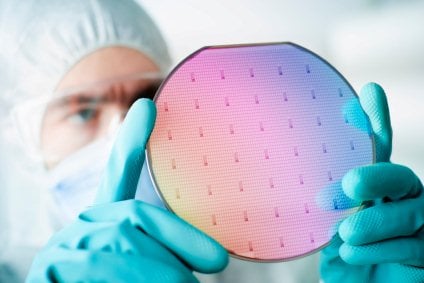Nanotechnology Research Key to Big Semiconductor Breakthroughs
Thursday, Jul 16, 2015, 4:00pmby年代emiconductor Industry Association
The world’s big challenges are increasingly solved using technology that is exceedingly small. Nanotechnology, which involves the manipulation of individual atoms and molecules, is making possible breakthroughs across a range of applications, including transportation, health care, clean energy, communications, and entertainment. The semiconductor industry designs and manufactures at the nanoscale level and depends heavily on advances in nanotechnology.

年代IA and年代emiconductor Research Corporation (SRC)todaysubmitted recommendationsto the White House Office of Science and Technology Policy (OSTP) on how to utilize nanotechnology to address big scientific and technical challenges. SIA and SRC’s input comes in response to an OSTP initiative called “Nanotechnology-Inspired Grand Challenges for the Next Decade,” which seeks to identify large-scale research challenges that can be solved using nanoscience and nanotechnology within the next 10 years.
年代IA and SRC’s comments identify two key areas for future semiconductor research that overlap with the nanotech grand challenges: 1) development of new sensors and computing and communications technology that can enable a secure Internet of Things (IoT); and 2) creation of more energy efficient semiconductors that can enable more energy efficient computing.
These semiconductor research areas and others depend heavily on nanotechnology. The features of today’s leading edge transistors are less than 10 nm in dimension, allowing billions of transistors on a single integrated circuit. The drive toward ever more powerful, fast, and energy efficient semiconductors increasingly will increasingly require the use of nanotechnology.
The semiconductor industry undertakes a significant amount of research on the use of nanotechnology to help advance future breakthroughs in semiconductor technology. In addition to in-house R&D by the industry, SRC invests in fundamental university research through partnerships with federal agencies that also fund basic research and have an interest in semiconductor-related science and engineering.
Nanotechnology has the potential to unlock the next wave of semiconductor innovations, including those made possible by the IoT. These breakthroughs will make transportation safer and more efficient, deliver better and more personalized medicine to patients, and strengthen America’s military systems, among many other applications. By identifying and addressing the nanotechnology challenges of today, we can build a healthier, cleaner, better-connected tomorrow.







